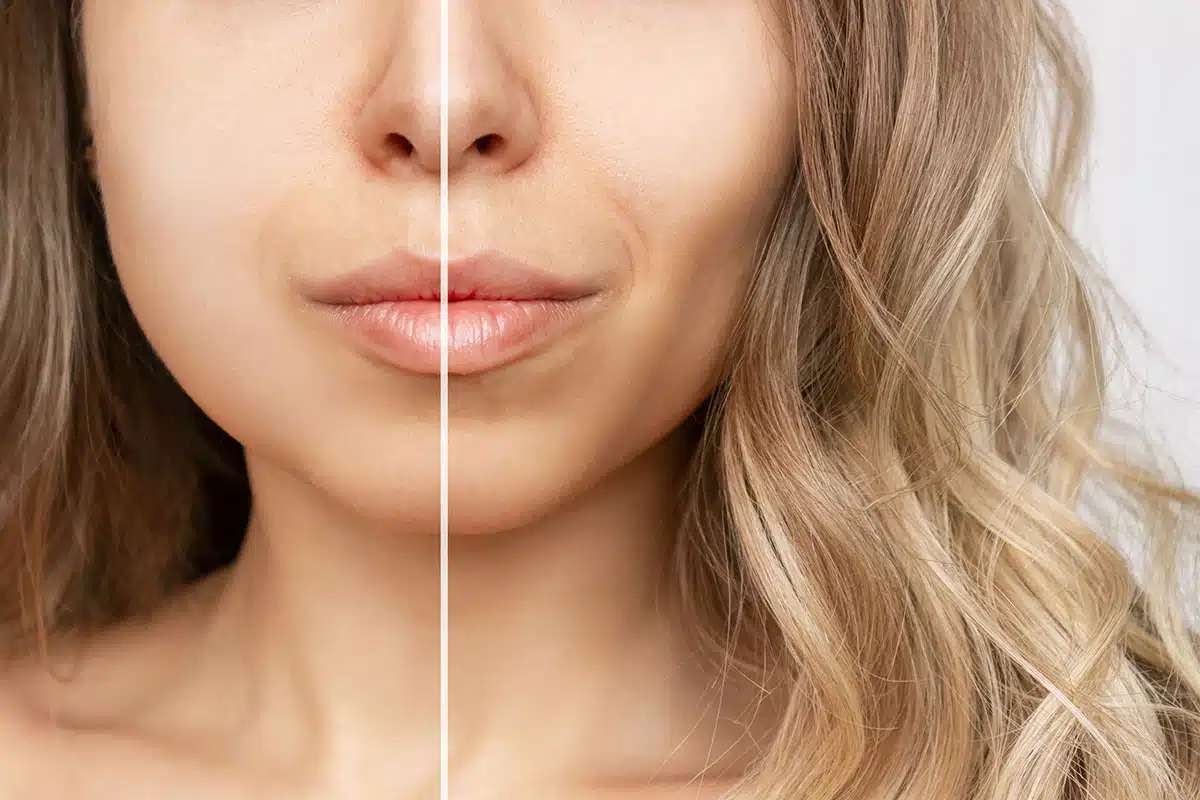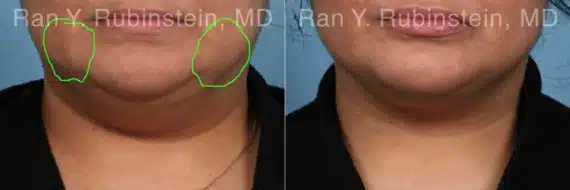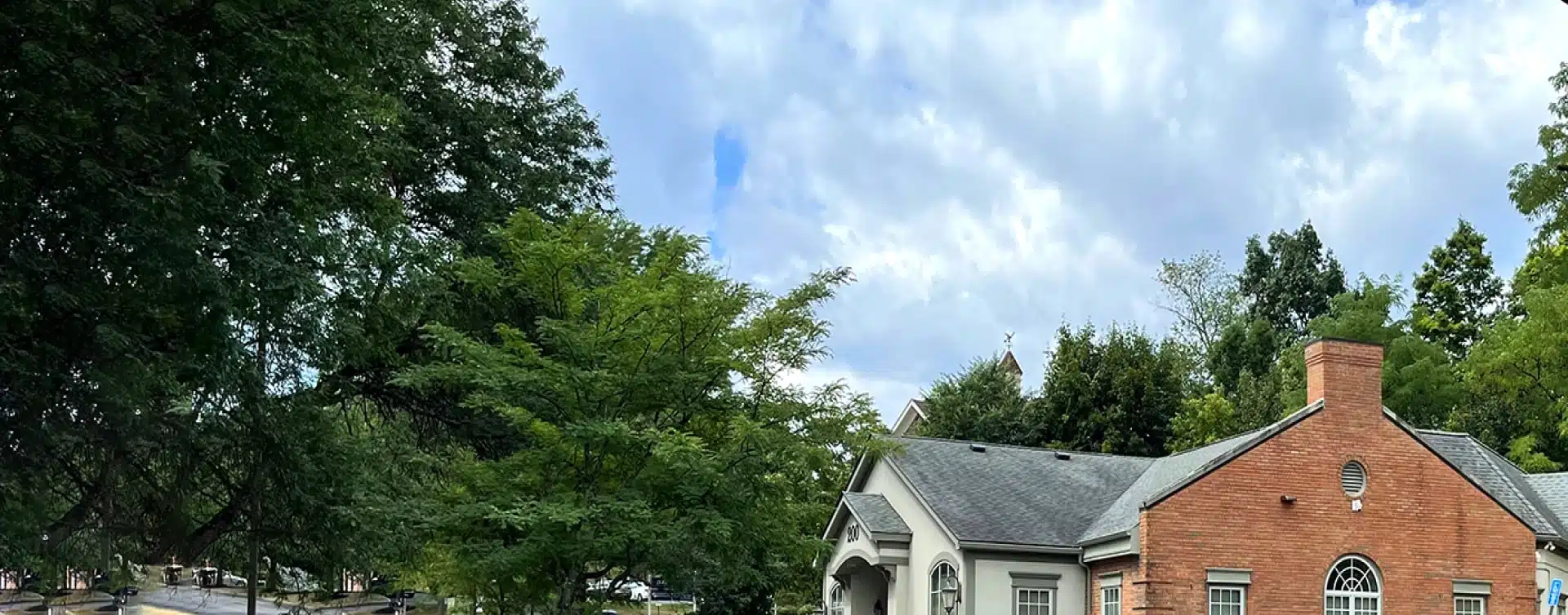If you want a slimmer face and more prominent cheekbones, cheek liposuction and buccal fat removal are two possible choices. But what is the difference between buccal fat removal vs Cheek liposuction? These surgeries both improve the lower face shape but their surgical approaches are different.
Recognizing these distinctions is important to select the correct option to reach your facial sculpting ambitions. Below, we’ll break down everything you need to know to help you decide which procedure might be best for you.

What Makes Buccal Fat Removal and Cheek Liposuction Any Different?
Buccal fat removal is a surgical procedure that removes the fat pad located beneath your cheekbone. In contrast cheek liposuction uses a thin tube plus suction to pull out extra fat from the cheeks. Both treatments refine the face but they operate through separate mechanisms plus align with diverse aesthetic desires.
Buccal Fat Removal vs Cheek Liposuction
What is Buccal Fat Removal?
Buccal fat removal involves a surgical operation. It works on the fat pads under the cheekbones and it produces a thinner face with improved definition. During this process, the surgeon cuts into the mouth and then extracts the fat pads. This results in little outside scarring. For people with wider cheeks, this procedure is preferable because they gain a stronger face shape. This operation is helpful for people who naturally own rounder faces, unlike cheek liposuction.
What is Cheek Liposuction?
This is a less invasive option to eliminate surplus fat from the cheeks. The surgeon uses a thin tube or cannula, to suction out fat. Small cuts are made near the needed spots and unwanted fat disappears. This process shapes the face. Unlike buccal fat removal, it does not target a specific fat pad. Cheek liposuction offers diverse fat decrease in different spots of the lower face. It is suited for people with specific fat deposits, not overall roundness.
Who is a Good Candidate for Buccal Fat Removal?
Buccal fat removal suits people with naturally fuller cheeks. These people desire a more sculpted face. This procedure functions best for those at a stable weight and they have good skin elasticity. Good skin elasticity assures smooth results after the surgery. The procedure helps those who think their face seems too round and want a defined look. People with already low facial fat might not work. Older people with less skin elasticity aren’t a good fit. It can make the face seem overly hollow as time passes.
Who is a Good Candidate for Cheek Liposuction?
Cheek liposuction is suitable for people with fat deposits in the lower cheek area. For these people diet besides exercise do not fix the issue. It provides a superb choice for individuals – they look for some fat lessening without removing a fat pad. This makes it a more personal approach. Candidates must display good skin elasticity. A smooth, natural shape comes after the fat comes out. It proves good for people with noticeable fullness in the lower face. They have this instead of overall roundness. It becomes a supplement to other face shaping treatments.
Start Your Journey to Success, Don’t Wait More!
Join our satisfied clients who’ve experienced safe, effective treatments.
How Much Does Buccal Fat Removal Cost?
The cost for buccal fat pad removal changes based on factors such as the surgeon’s skill, where the clinic sits and added costs like anesthesia and the facility’s fees. This procedure is about $4,500 but prices differ from $1,800 to $9,400, says RealSelf. Because this is cosmetic, insurance does cover the procedure and you must fund it yourself. Just like cheek liposuction, the last amount will depend on your provider and where you are.
How Much Does Cheek Liposuction Cost?
Cheek liposuction is typically more expensive than buccal fat removal, largely due to the technique and tools involved. While general liposuction can range from $3,500 to $20,000, facial liposuction tends to cost around $5,000, though this varies by location and surgeon expertise. Like buccal fat removal, cheek liposuction is a cosmetic procedure and is not covered by insurance. Additional factors like anesthesia fees, clinic costs, and follow-up care may also influence the overall price.
The Buccal Fat Removal Recovery
Buccal fat removal recovery is relatively straightforward, with most patients experiencing swelling and mild discomfort for the first week. Stitches placed inside the mouth dissolve on their own within 7-10 days, and patients can usually return to normal activities within a week. Full results become visible as swelling subsides over the next 3-4 weeks. Compared to cheek liposuction, buccal fat removal has a quicker healing process since there are no external incisions, reducing the risk of noticeable scarring.
The Cheek Liposuction Recovery
Cheek liposuction recovery takes slightly longer due to the nature of the procedure. Patients may experience swelling, bruising, and tenderness for up to two weeks, with most returning to daily activities within 10-14 days. Compression garments may be required to help control swelling and promote proper healing. Unlike buccal fat removal, which removes a defined fat pad, cheek liposuction involves contouring multiple areas, which can lead to a more gradual reduction in swelling. Full results are typically visible within 3-6 months as the skin adjusts to its new contour.
Patient Results

* All patients are unique and individual results may vary.
What Are the Advantages of Choosing Buccal Fat Removal?
Buccal fat removal offers several benefits for individuals looking for a more defined facial contour. It provides permanent fat reduction in a specific area, making it an excellent choice for those with naturally fuller cheeks. Compared to cheek liposuction, it involves minimal external incisions and a quicker healing process.
- Less risk of uneven fat removal – Since it removes a specific fat pad, the results tend to be uniform and predictable.
- No external incisions – Since the procedure is performed through the inside of the mouth, there are no visible scars.
- Faster recovery – Most patients recover within a week, experiencing minimal post-surgical discomfort.
- Ideal for rounder faces – It is a great option for individuals with naturally full cheeks who want a more sculpted look.
- Generally lower cost – On average, buccal fat removal is less expensive than cheek liposuction, making it a more cost-effective option for those seeking facial contouring.
What Are the Advantages of Choosing Cheek Liposuction?
Cheek liposuction is a highly customizable procedure that allows for precise contouring of the lower face. It is ideal for individuals looking to remove targeted fat pockets without altering their overall facial structure. Compared to buccal fat removal, it provides more flexibility in shaping the face.
- Good for individuals with less facial fat – Since it removes fat in a controlled manner, it’s a great option for those who need minor contouring rather than a dramatic reduction.
- More customizable fat removal – The surgeon can sculpt different areas of the lower face, rather than just targeting a single fat pad.
- Better for localized fat deposits – Ideal for those who have excess fat in specific areas rather than overall facial fullness.
- Can be combined with other procedures – Works well alongside neck liposuction or chin augmentation for enhanced facial balance.
How To Choose Between Cheek Liposuction and Buccal Fat Removal?
Choosing between cheek liposuction and buccal fat removal can be challenging, but consulting with an experienced facial plastic surgeon can make all the difference. A skilled specialist will assess your facial structure, aesthetic goals, and skin elasticity to recommend the best procedure for your unique needs.
Dr. Ran Y. Rubinstein, a double-board-certified facial plastic surgeon, specializes in facial contouring procedures, including cheek liposuction and buccal fat removal. With over two decades of experience, he provides personalized recommendations to help you achieve balanced, natural-looking results. Call us today at (845) 863-1772 to schedule a consultation and take the first step toward your ideal facial contour.
